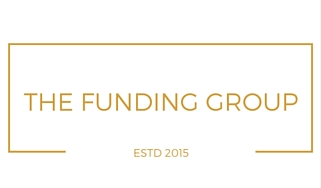Qualified mortgages are a new type of mortgage. They were created in 2014 to improve the probability that borrowers will be able to repay their loans. Lenders need to assess the ability of borrowers to repay and they must adhere strictly to strict criteria.
These criteria are not required to be approved for qualified mortgages. In these cases, a non-qualified mortgage might be offered. Although these loans might not be the best choice for all borrowers, they could still be the best.
These facts will help you make an informed decision about which mortgage option is best for you: qualified or non-qualified.
What’s a Qualified mortgage?
Qualified mortgage loans (QM) are compliant with all Dodd-Frank Act consumer protection requirements. Lenders cannot offer mortgage products with artificially low monthly payments, or that increase rapidly after the initial period ends. The borrower must have a reasonable debt to income ratio (DTI).
What are QM Rules?
It is important to know what qualifies for a mortgage. You need to understand the requirements lenders must meet to lend you a qualified mortgage. These are the requirements to qualify for a mortgage.
- Certain loans may have high monthly repayments or risky features, such as negative amortization loans, interest only, balloon or interest only loans. These loans are often referred to as subprime mortgages.
- High percentages of borrowers use their income to pay off their debt. The amount of income that a borrower can use for debt repayment is limited. This is called the DTI ratio, and it cannot exceed 43%.
- Additional fees and upfront expenses. The maximum fees and costs will be determined by the loan amount. The loan will not be approved if it exceeds the limit.
- Lender terms that exceed 30 years
Qualified mortgages are also evidence that the lender has met the ability to repay requirements. A qualified mortgage is generally one that the lender has asked about your income, assets, and credit history in order to determine if the loan can be repaid.
What’s a Nonqualified Mortgage?
Nonqualified mortgages (nonQM) do not meet the Dodd-Frank Act’s requirements. These mortgages might be available to applicants with unique circumstances or incomes that are inconsistent from month-to–month.
If your DTI is greater than 43%, a lender may not be able to offer you a qualified mortgage. A qualified mortgage may not be available to you if your income is irregular or you don’t meet income verification requirements.
A lender may offer you a nonqualified loan as an alternative. Nonqualified mortgages may be offered by a lender. They will still need to verify that you can repay the loan. This means that you do not meet the criteria for a qualified mortgage.
CoreLogic data indicates that nonqualified mortgage borrowers are most interested in the following:
- Limited documentation
- DTI higher than 43%
- Interest-only loans
Although interest rates vary between lenders, you may find that non-qualified loans have higher rates.
NonQM Loan FAQs
There are many differences in qualified and unqualified mortgages. There are also differences in the loan. These are only a few differences between loans.
What legal protections does QM loan offer you?
Dodd-Frank offered protection to QM mortgage lenders against legal challenges in foreclosure proceedings. Lenders can show that they have verified your ability to repay your QM mortgage. This protects lenders from any lawsuits that may claim they failed to verify a borrower’s ability to repay.
Lenders may be sued in court if a borrower doesn’t feel responsible for their ability repay the loan.
QMs are not guaranteed, insured, or backed FHA/VA Fannie Mae/Freddie Mac. Investors who invest in mortgage-backed investments are therefore safer.
How can Lenders verify Income for NonQM Loans
While nonQM loans might not be eligible for QM loans, they are not necessarily low-quality loans. QM borrowers had a credit score of 754. NonQM loans had an overall credit score of 754, while QM loans had an 89% loan-to–value ratio.
NonQM borrowers, however, have an average DTI ratio that is higher than QM borrowers.
NonQM borrowers can be offered mortgages by lenders with some flexibility. Lenders must verify all information. Lenders must confirm and document all information that could be used to support the borrower’s ability to repay.
This includes income sources. They may also require proof of assets or other information to ensure that the borrower can repay the loan.
NonQM loans are not insured, guaranteed or backed by Fannie Mae, VA, or FHA.

